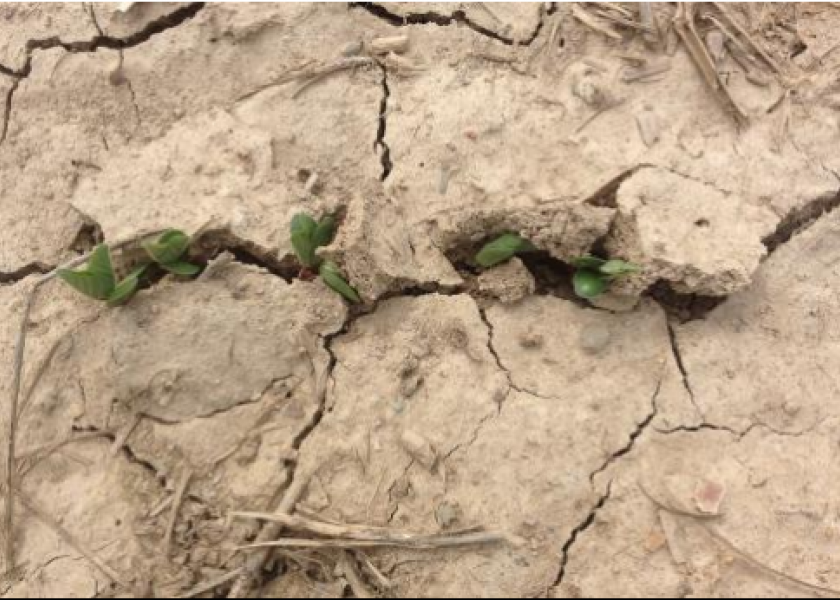Bust out the Rotary Hoe to Help Soybeans Emerge in Crusted Over Soils

If you planted soybeans in wet soils and are concerned they’re now drying out and creating a tough crust, consider running a rotary hoe before the crust has a chance to completely harden.
“We have a saying here, and it’s ‘hoe before you know,’” says Ken Ferrie, Farm Journal Field Agronomist and owner of Crop-Tech Consulting Inc., near Heyworth, Ill.
The reason to be proactive and go to the field is because once that crust sets up, it can hinder or even prevent crop emergence. Plus, light can get through the cracks in the crust and the crop will begin the photosynthesis process while still under the ground.
“In this situation, plants are stuck under the crust (and can cause) your stand count to experience significant loss,” according to Iowa State University Extension. “Breaking the crust (can) minimize the need to replant, saving you the cost of more seed as well as the fuel costs associated with replanting.”
“If you let that crust get hard that hoe is going to bounce over the top, and you're going to have to hit the field multiple times trying to break through,” Ferrie adds. “Now’s the time to strike.”
Click here to see the 250+ rotary hoes listed for sale right now on MachineryPete.com from sellers across the country.
Soil Types Most At Risk
Those soils that are fine textured, low in organic matter, have little to no surface residue, and are conventionally tilled are most at risk of developing a hard crust. Depending on your location, these soils are often referred to as timber soil, post oak or white dirt.
“You can save yourself a lot of headaches by keeping those soils from drying into a tight surface,” Ferrie says. “Instead of the beans having to lift a large plate of soil, they’ll just be pushing aside small chunks of soil.”
Depending on the variability of soil types in the field, Ferrie adds that you might not need to run a hoe across the entire field.
“We can kind of VRT our hoeing, that’s one way to think of it,” he says. “You can pick up the hoe and run across the ground that’s in good shape and then set it back down when you reach those soil types that can give you trouble.”
In this brief video (less than 1.5 minutes), Ferrie demonstrates how to evaluate soils and gauge whether planted soybeans need help from a hoe.
Ferrie: Add Weight to Planters, Break Out Rotary Hoes, Tend to Strip-Till Seedbeds
Corn Planting Progress the Slowest Since 2013
8 Soybean Planting Reminders for when Mother Nature doesn’t Cooperate
Rain Delay? You still have a 92% Corn Yield Potential if Planting May 20 in IA, IL







